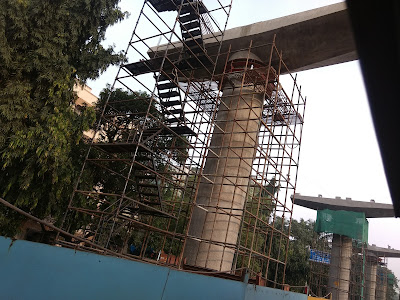Here is celebration of kitschy art at the Terminal 2 airport in Mumbai. I wonder why the curator felt that it was important to fill up every inch of space with some art or the other from some part of India. The orgy of ornament is suffocating! Over long forced walks at the T2, one is expected to brush along works that seem disparate and connected at the same time!
Over several ins and outs of T2 now, I am compelled to buy into Prasad's (Shetty) argument that the new airport is quite poor as a functional resolution - one that makes you walk much more than others, some times more than a kilometre to get to places of priority. One is baffled by the magnanimity of the airport for no real reason! Besides, as a public facility, as Prasad pointed, the airport becomes more and more cumbersome as it pushes access to public transport to the corner, and levies taxis and services a heavy parking or entrance charge! Setting itself aloof from the city, it becomes an exclusively private entity, for the elite to savour.
Prasad draws attention to the diagrams of several airports to critique T2. For those traveling once in a while, the new Mumbai Airport may be an experience. However, for regular commuters, the sheer redundancy of circulation within which the art work and plastic landscape is accommodated can become quite tedious. The airport makes you go up and down and pushes you through a humungous shopping plaza that you aren't necessarily ready to engage with. Besides, the long walks and the pressure to reach to the boarding gates in time never leave you with any room for standing and gazing by the overflowing artworks along the airports.
Nevertheless, there is no question that architecturally, the building is well detailed - but you leave it thinking -- at what expense?





